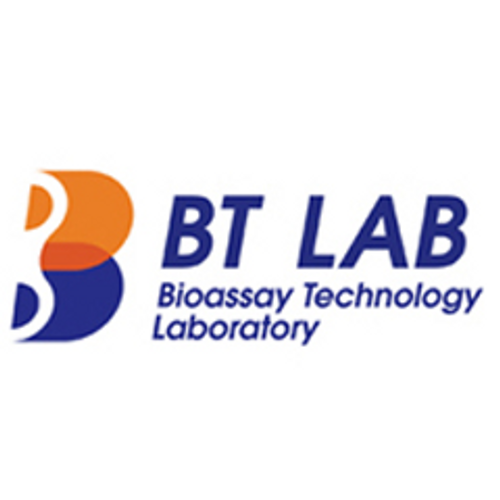Product Description
Human Matrix metalloproteinase 9/Gelatinase B (MMP-9) ELISA Kit | AE63046HU | Abebio
Species Reactivity: Human (Homo sapiens)
Abbreviation: MMP9
Alternative Name: CLG4B; GELB; MANDP2; MMP-9; macrophage gelatinase|matrix metalloproteinase 9|matrix metalloproteinase 9 (gelatinase B; 92kDa gelatinase; 92kDa type IV collagenase) |type V collagenase
Application: ELISA
Range: 0.156-10 ng/mL
Sensitivity: 0.059 ng/mL
Intra-Assay: ≤3.9%
Inter-Assay: ≤6.6%
Recovery: 0, 95
Sample Type: Serum, Plasma, Other biological fluids
Detection Method: Sandwich
Analysis Method : Quantitive
Test Principale: This assay employs a two-site sandwich ELISA to quantitate MMP9 in samples. An antibody specific for MMP9 has been pre-coated onto a microplate. Standards and samples are pipetted into the wells and anyMMP9 present is bound by the immobilized antibody. After removing any unbound substances, a biotin-conjugated antibody specific for MMP9 is added to the wells. After washing, Streptavidin conjugated Horseradish Peroxidase (HRP) is added to the wells. Following a wash to remove any unbound avidin-enzyme reagent, a substrate solution is added to the wells and color develops in proportion to the amount of MMP9 bound in the initial step. The color development is stopped and the intensity of the color is measured.
Product Overview: MMP-9 (also known as gelatinase B) is secreted as a 92 kDa zymogen. Cleavage of pro-MMP-9 at or near residue 87 results in the active enzyme with a mass of approximately 82 kDa. MMP-9 has three fibronectin type II domains, a hemopexin-like domain and a proline-rich type V collagen-homologous domain.Pro-MMP-9 can be activated by MMP-3 or by certain bacterial proteinases. MMP-9 is inhibited byα2-macroglobulin or by TIMP-1, which binds to pro-MMP-9 as well as to active MMP-9.Pro-MMP-9 is secreted by monocytes, macrophages, neutrophils, keratinocytes, fibroblasts, osteoclasts, chondrocytes, skeletal muscle satellite cells, endothelial cells, and various tumor cells. Pro-MMP-9 expression is upregulated by TGF-β1, IL-1β, TGF-α, PDGF-AB,
Stability: The stability of ELISA kit is determined by the loss rate of activity. The loss rate of this kit is less than 5% within the expiration date under appropriate storage condition. The loss rate was determined by accelerated thermal degradation test. Keep the kit at 37°C for 4 and 7 days, and compare O.D.values of the kit kept at 37°C with that of at recommended temperature. (referring from China Biological Products Standard, which was calculated by the Arrhenius equation. For ELISA kit, 4 days storage at 37°C can be considered as 6 months at 2 - 8°C, which means 7 days at 37°C equaling 12 months at 2 - 8°C) .
 Euro
Euro
 USD
USD
 British Pound
British Pound
 NULL
NULL








